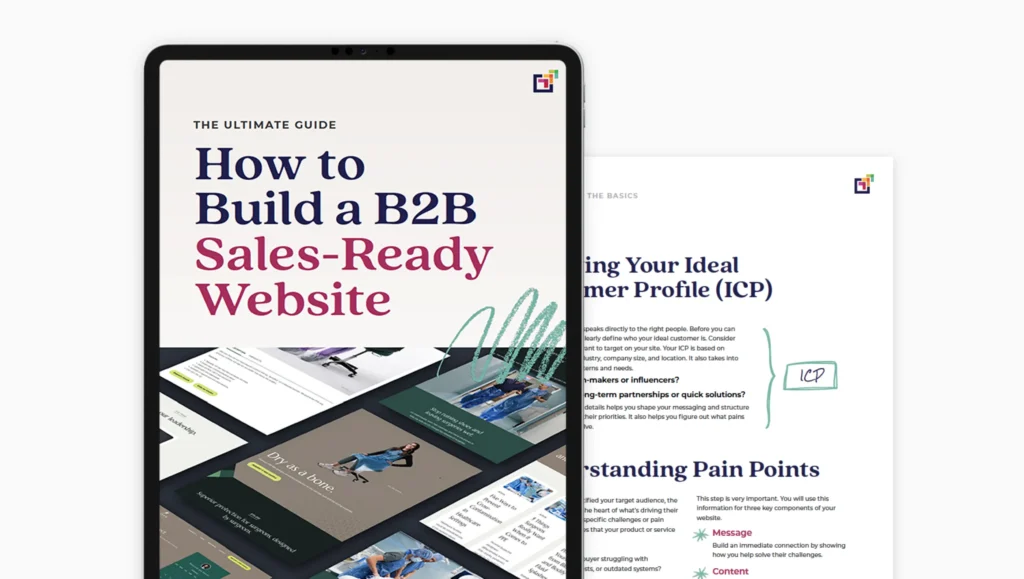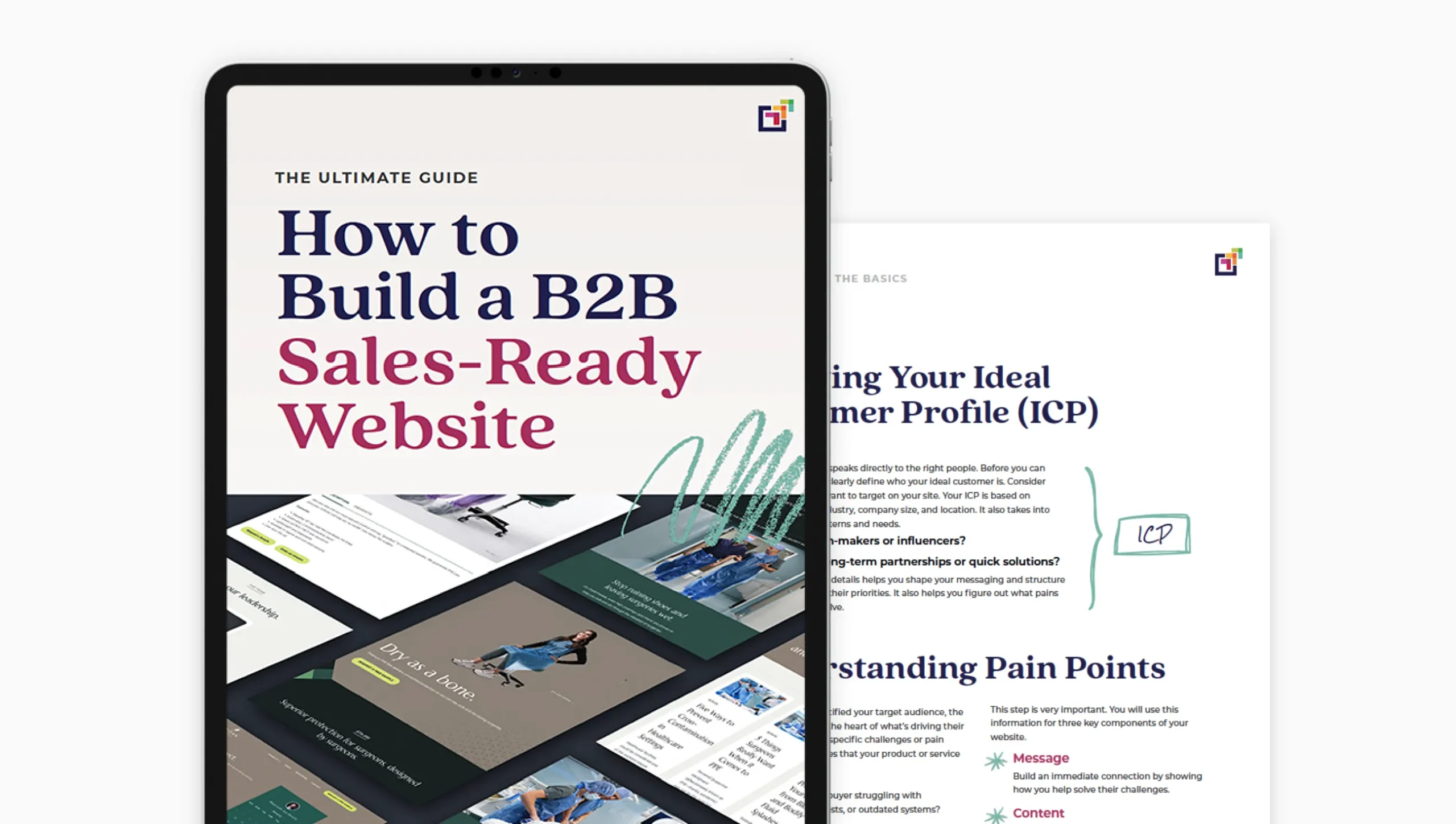They say only death and taxes are inevitable… but here’s a third thing to add to that list: Google Core Updates.
If the 2025 Google Core Updates have impacted your B2B website traffic, you’re in good company. Search rankings have been volatile all year, and organic traffic has been decreasing across the board. These core updates happen multiple times a year, so why have the 2025 updates been so significant?
For years, some low-quality websites have gotten away with keyword stuffing, writing for search engines instead of people, plagiarism, and a host of other “black-hat” SEO techniques that still captured high search positions. Google’s 2025 Core Updates are putting an end to that.
“There’s nothing new or special that creators need to do for this update as long as they’ve been making satisfying content meant for people. For those that might not be ranking as well, we strongly encourage reading our creating helpful, reliable, people-first content help page,” Google said previously.
Obviously, the content on your B2B website will significantly influence your site’s search rankings and traffic. Organic search traffic is the lifeblood of your B2B sites’ lead generation and growth.
Let’s take a look at what Google changed, how to understand if you’ve been impacted, and what you should do to recover, if need be.
What Is a Core Update?
A Core Update, or Core Algorithm Update, from Google changes how the world’s most popular search engine analyzes website information to return helpful results in search rankings. Google makes these updates to improve search results, give users the best experience possible, and in 2025, make updates that include AI Overviews.
When a core update happens, search rankings change, and that impacts how much organic traffic a site gets. B2B websites may see changes in their rankings, especially if they aren’t currently adding content like blogs or articles to their website on a regular basis.
Google’s 2025 Core Updates
So far in 2025, Google has introduced two significant core updates. These updates were designed to help the search engine deliver more relevant and trustworthy information, written by human beings, for human beings.
Businesses focusing heavily on SEO tricks found themselves struggling the most. Their rankings took a hit as Google’s algorithm was updated to prefer content that was genuinely valuable for people and reliably sourced or authoritative. Even quality B2B websites experienced some ranking volatility, especially if these sites weren’t regularly adding content and updating site pages.
Here’s what the two major Core Updates in 2025 have changed so far:
March 2025 Core Update
The March 2025 core update shook up search rankings across all industries. Google’s new focus is on authentic, authoritative, educational, and high-quality content.
This means websites need to produce content that engages and informs users. Google’s algorithm can tell when content is AI-generated and unedited, and it’s deprioritizing those pieces of content in search.
Quality content directly influences SEO rankings and online visibility. Many businesses that previously ranked well saw big drops. Those with valuable content actually secured better positions in search results.
For B2B sites, this update reinforces the need for a solid content strategy.
June 2025 Core Update
Following the March update, the June 2025 core update doubled down on Google’s people-centric approach.
This update places even more emphasis on user experience and site trustworthiness. B2B sites need to ensure their content is not only helpful but also fast-loading and easy to navigate. Websites that improve site speed and usability will have an advantage in the coming months/
Rankings are now even more closely tied to how well sites cater to users’ needs and expectations. Updated content, not just new content, to ensure that your website remains fresh and relevant, is also a big key to success right now.
Overall, the June update pushes websites to deliver a superior digital experience for their audiences. Google’s advice?
“We suggest focusing on ensuring you’re offering the best content you can. That’s what our algorithms seek to reward.” Google Support, 2025
Recovering Site Traffic After a Google Core Update
Okay, so maybe you’re worried about how these Google Core Updates could drop you in search. Maybe you’re not sure if there’s a problem yet, but you want to be prepared. Or maybe you’ve already been hit by a big dip in traffic and you need to recover.
Start by using Google’s tools to monitor your traffic and search information. Then, you’ll need to adapt your website strategy to make sure your website meets the new search engine requirements for user experience and valuable content.
Use Google Analytics to Monitor Traffic Sources
To understand changes in your site traffic, Google Analytics is your best friend. It provides detailed insights into where your traffic originates. This information is crucial after a Google core update, especially if you think a drop in organic traffic is responsible for your recent website woes.
By knowing which sources are most affected, you can adjust your strategy accordingly. Google Analytics allows you to track different traffic segments over time. You can view changes in organic traffic and evaluate which pages have altered performance. It helps you pinpoint areas for improvement.
Using this data, you’re better equipped to refine your content and marketing efforts effectively.
Use Search Console to Monitor Search Rankings
Before and after a Google core update, you should be keeping an eye on your search rankings. Google Search Console is Google’s tool for this.
Search Console provides insights into your website’s performance on Google Search. It shows your B2B website’s position in search results, highlighting changes and ranking fluctuations. It shows you what search queries are sending people to your website, so that you can figure out what kind of content people expect when they land on your site.
This tool also helps you identify which of your keywords need more attention. You can determine which content to focus on and which pages might need updating. This keeps your B2B website competitive in the ever-changing search landscape.
Use Helpful, Educational Content Written for Humans
Google’s recent core update really emphasizes writing and publishing helpful content for humans on your website.
Google search now more heavily prioritizes helpful, well-written content that serves user intent and makes sense to people, not just to search engines.
Blogs, comparison guides, and educational articles now hold more value than ever. How-to guides and explainer articles also make a strong impact because they help website visitors solve a problem.
All this content boosts your search rankings and establishes your authority in your niche. Your B2B business gains trust when providing valuable information — both from people and from the search algorithm.
Being featured as a source in Google’s AI Overviews is another benefit of high-quality content. Gemini specifically appears to be trained to learn from helpful, human-centric information, and getting your site featured as a “source” in an AI Overview is one way to keep this search feature from cannibalizing your organic traffic.
Prioritizing people-first content is key to thriving after the update. Now’s the time to revamp (or launch) your content marketing strategy.
Use Video and Interactive Content to Engage Site Visitors
Site engagement is another key factor in search rankings, so use high-engagement features that, again, help your visitors with whatever problem or question brought them to you in the first place.
Google uses time-on-page statistics to gauge engagement levels. Longer time spent on your page suggests useful content and a better user experience, boosting your search ranking.
Adding videos to blogs or site pages enriches your content and gives people a reason to stay. They grab attention and keep visitors engaged longer. But you can go beyond video: try using interactive features like polls, comments, and quizzes to enhance user interaction and extend your time-on-page stats even further.
Maps, chats, forms, and on-page surveys also invite engagement. These elements engage your audience, reduce your bounce rate, and help Google understand the value of your page in search.
How Long Will it Take to Get Site Traffic Back After a Core Update?
You looked through your analytics and confirmed it in Search Console. For whatever reason, the most recent Core Update cost you traffic. How long will it take to get it back?
Recovering site traffic after a Google Core update is a bit nebulous. Google says you might not have done anything “bad” to result in your site’s deprioritization, and there might not be an instant fix for the drop.
“One way to think of how a core update operates is to imagine you made a list [in 2015] of the top 100 movies in history. Then, in 2025, you refresh the list. It’s going to naturally change. Some new and wonderful movies that never existed before will now be candidates for inclusion. You might also reassess some films and realize they deserved a higher place on the list than they had before. The list will change, and films previously higher on the list that move down aren’t bad. There are simply more deserving films that are coming before them,” Google wrote.
Essentially, Google says you need to make sure your site is always “deserving” of its search position, or you’ll lose it. Continuously updating and improving website content is the only way to retain (or to earn) a high position in search results. Your website strategy and content strategy are the most effective tools you have here.
A strong, human-centric SEO strategy can also speed up recovery. Human-centric SEO work includes off-page tactics like link building on relevant directories, unifying and optimizing your Google Business presence, scraping the internet for outdated or inconsistent information about your business to correct it, and technical updates that optimize site speed for your users.
Supplementing your traffic rebuilding efforts with a paid ad strategy can be effective, too. Use a mix of social, search, and display ads to build up or protect your brand presence, share compelling content that pulls people to your website, and target your ideal customers with offers.
Things to Keep in Mind When Making Site Changes in Response to a Core Update
If you’re thinking about making changes to your website in response to your new ranking after the core update, Google actually suggests looking at the websites that outrank you. What are they doing that you aren’t?
Content frequency, length, topics, and types could all be areas your competition is outperforming you. Authority and original content are what matter most.
After checking out the competition, it’s time to make your own content and website strategy. Think about these five things when you do:
- Valuable Content: Create original content using original information or research that provides real value and answers questions. Does your content provide interesting information or insightful analysis not found elsewhere? Google suggests asking yourself, “Would I expect to see this content in a printed magazine, book, or encyclopedia?”
- Internal Linking: Use internal links to improve navigation and user engagement. Link to other helpful content related to your buyer’s journey.
- Site Speed: Optimize loading times for a better user experience. Slow, buggy websites get deprioritized fast.
- Duplicate Content: Remove or revise duplicate content to avoid competing with yourself in the rankings. Duplicate content refers to any time the same content is found on multiple URLs on the internet. It essentially indicates that the same material is accessible from different places, and the pages compete with each other in the rankings. Suppose you’re repurposing blog content for your LinkedIn articles, for example. You’ll want to make enough changes to make it digestible on social media and different enough from your original blog so that it doesn’t confuse the search engine. Don’t just copy/paste.
- People-First Content: Write content that prioritizes user needs, education, and information over search engine tricks. Google has confirmed it: you need to offer the best original content you can. That’s what their algorithm is programmed to reward.
Not Sure How to Start? Get a Site Audit.
Revamping a B2B website can be complex. Each change affects user experience and search engine results.
A website relaunch isn’t just about design. It involves content strategy, internal linking, and site speed. Any misstep can lead to ranking fluctuations or a higher bounce rate. Before making updates yourself, start with a site audit from a B2B website design agency, like Peer Sales Agency.
We’ll help you go beyond the SEO and algorithmic must-haves to turn your website into your best salesperson. Start your audit here. (No meeting required!)





